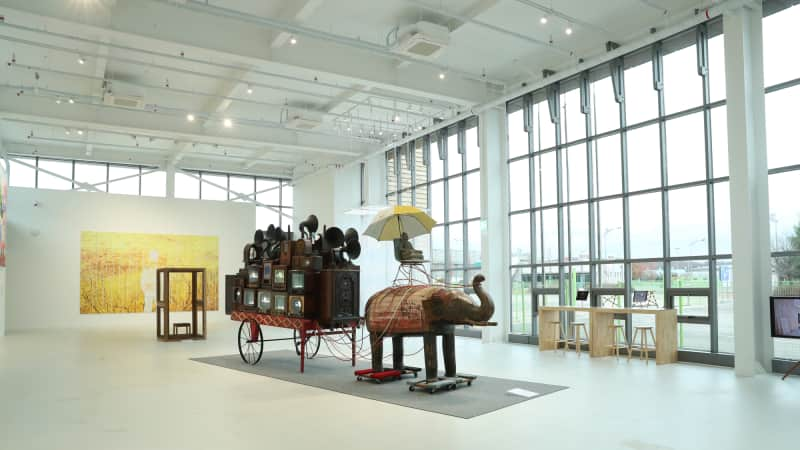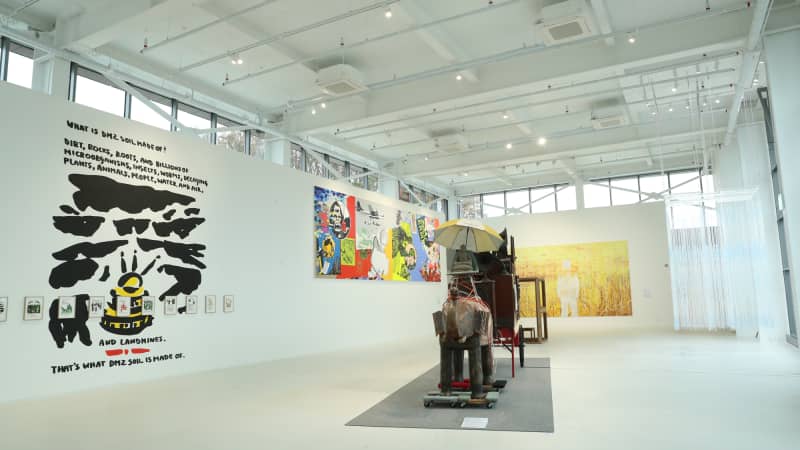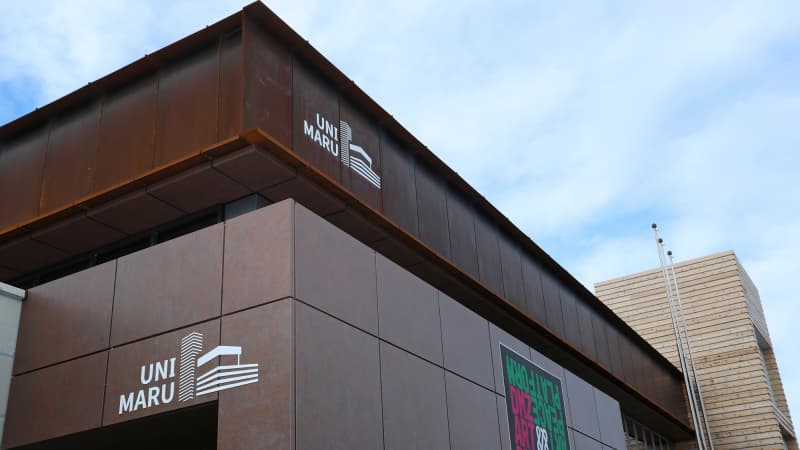(CNN) — Art has always had the power to be dangerous. But a newly opened art museum is taking that to another level.
Its inaugural exhibition, titled “2021 DMZ Art and Peace Platform,” featured 34 artworks by 32 artists and opened in September 2021.

“Elephant Cart” is a work by Nam June Paik, the late Korean-American artist considered the founder of the video art movement.
Ministry of Unification
Prior to becoming a museum, Unimaru was a customs clearinghouse, where visitors went through security screening before being allowed to visit the DMZ from 2003 to 2007. This was then replaced by a bigger office.
The building sat empty until early 2021, when architecture firm MPART — who also designed the National Museum of Modern Contemporary Art (MMCA) in Seoul — reimagined it as Unimaru. The museum’s name is a portmanteau of two Korean words: “uni,” meaning one, and “maru,” meaning space.
Due to both security and coronavirus concerns, visitor numbers are intentionally kept small.
A maximum of five tour groups per day, with no more than 30 people per group, were allowed when the museum was open. Now Unimaru is on hiatus as it mounts its next exhibit.
People who want to visit must apply to the South Korea Ministry of Unification (MOU) — the official government body that promotes reunification of the Koreas and dialogue between the two countries — for permission.
Once approved, they are secured a free ticket to Unimaru and can board one of the special buses allowed to ferry civilian guests to the DMZ.

On the left, you can see Slovenian artist Marjetica Potrč’s mural “What Is DMZ Soil Made Of?”
Ministry of Unification
After having their IDs checked, guests are escorted around the museum by docents and staffers from the MOU. These MOU staffers are civilians and do not carry weapons.
All visitors to the DMZ must abide by a dress code that bans miniskirts, shorts, and anything with camouflage print.
They are not allowed to wave at anyone they might see or take pictures of anything without permission, just in case they run afoul of security issues.
Kids under 8 years old are also barred from the DMZ, regardless of their country of origin.
In 2018, South Korean President Moon Jae-in and North Korea’s chairman Kim Jong Un held an Inter-Korean Summit Meeting at the “Peace House” at Panmunjom on the DMZ.
Technically, the two nations are still at war, but at the meeting Moon and Kim agreed to move toward formally ending their conflict. The agreement also stated that both countries would remove weapons, guards and landmines from Joint Security Area (JSA).
It was the departure of guards from some of the military watchpoints that allowed Unimaru to display artwork on a repurposed former guard tower just a mile from the border.

The exterior of Unimaru.
Ministry of Unification
Artwork from both South Korean and international artists is on display at Unimaru.
However, one of the most striking installations is an empty frame that represents where the museum hopes to someday display work from North Korean artists.
The JSA, or Panmunjom, is probably the best known place along the DMZ because of its recognizable bright-blue conference room, which is the most-visited attraction in the area.
Former US President Bill Clinton famously said that the DMZ was the “scariest place on earth” after a state visit there in 1993.
Panmunjom tours resumed on November 30, after being suspended in July as South Korea tightened its Covid-19 restrictions.
